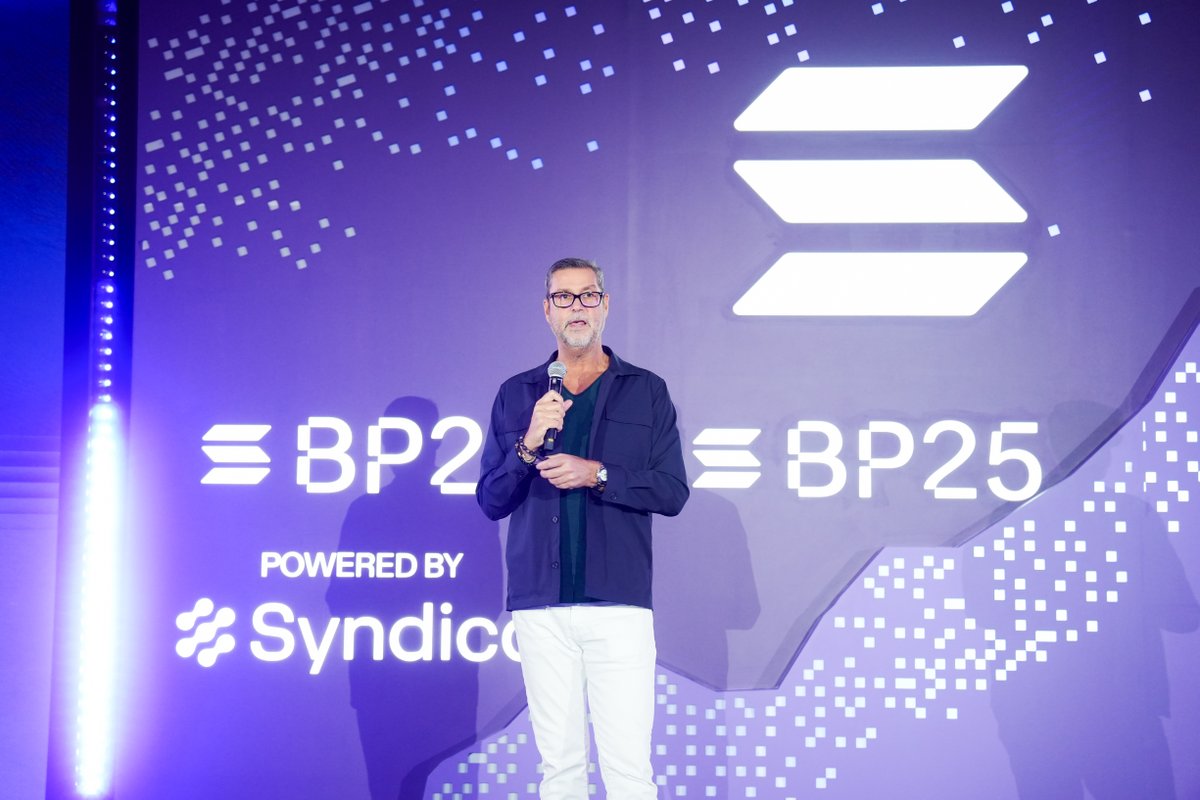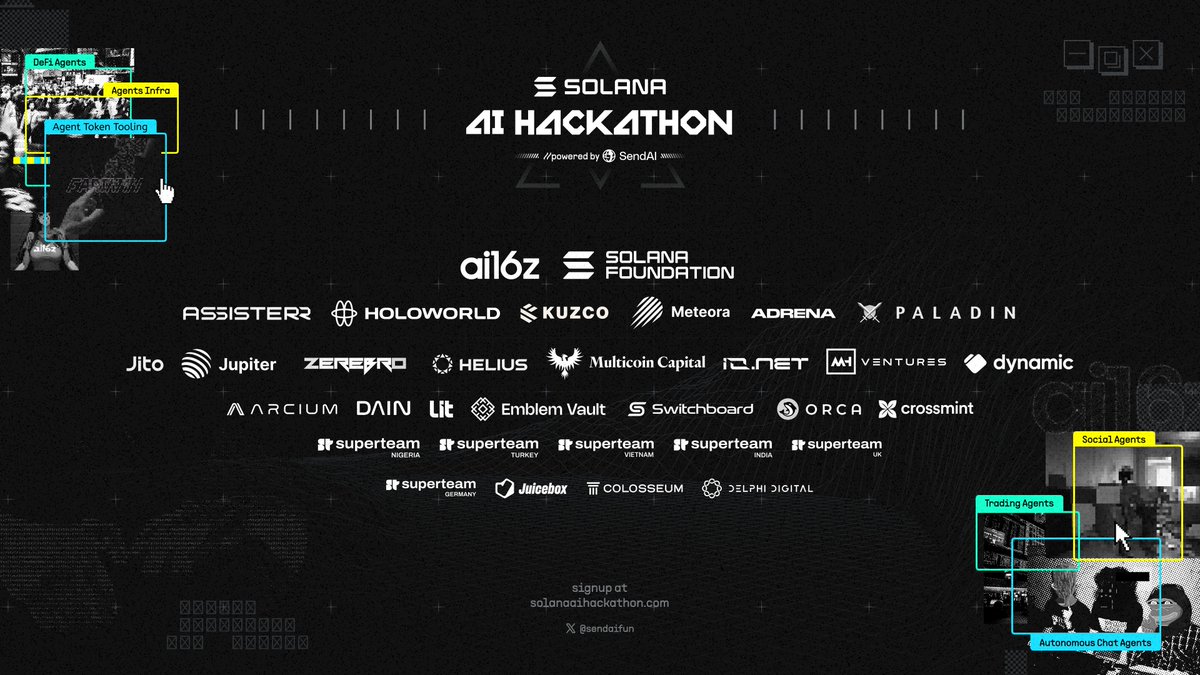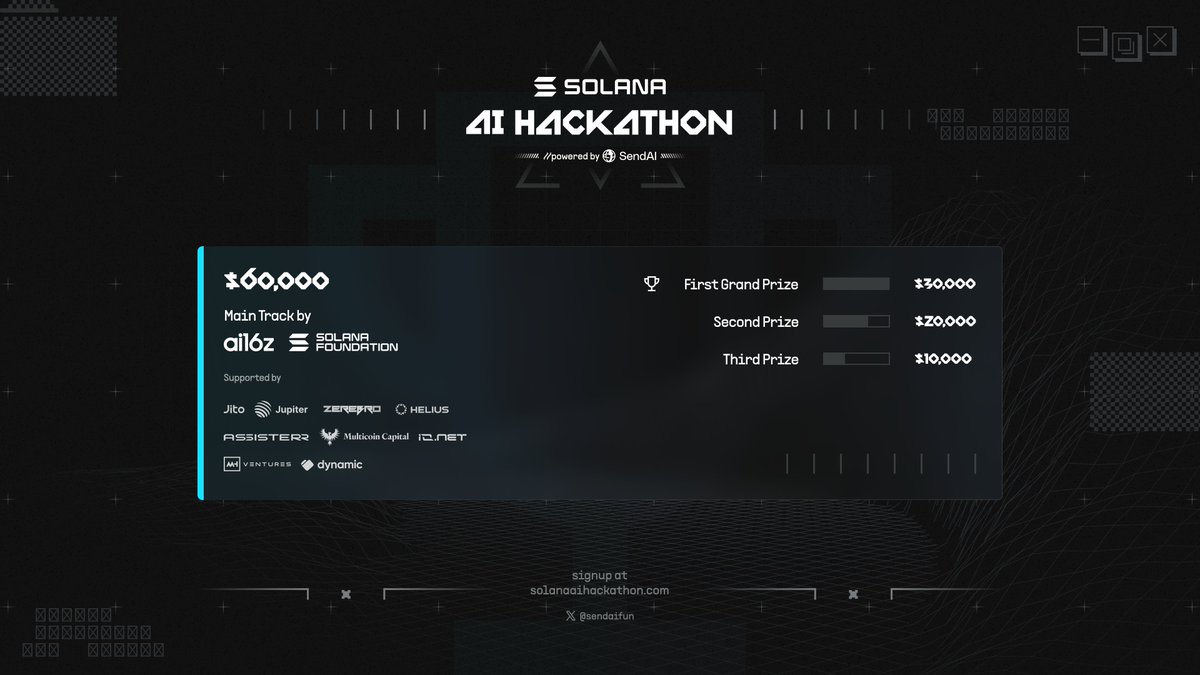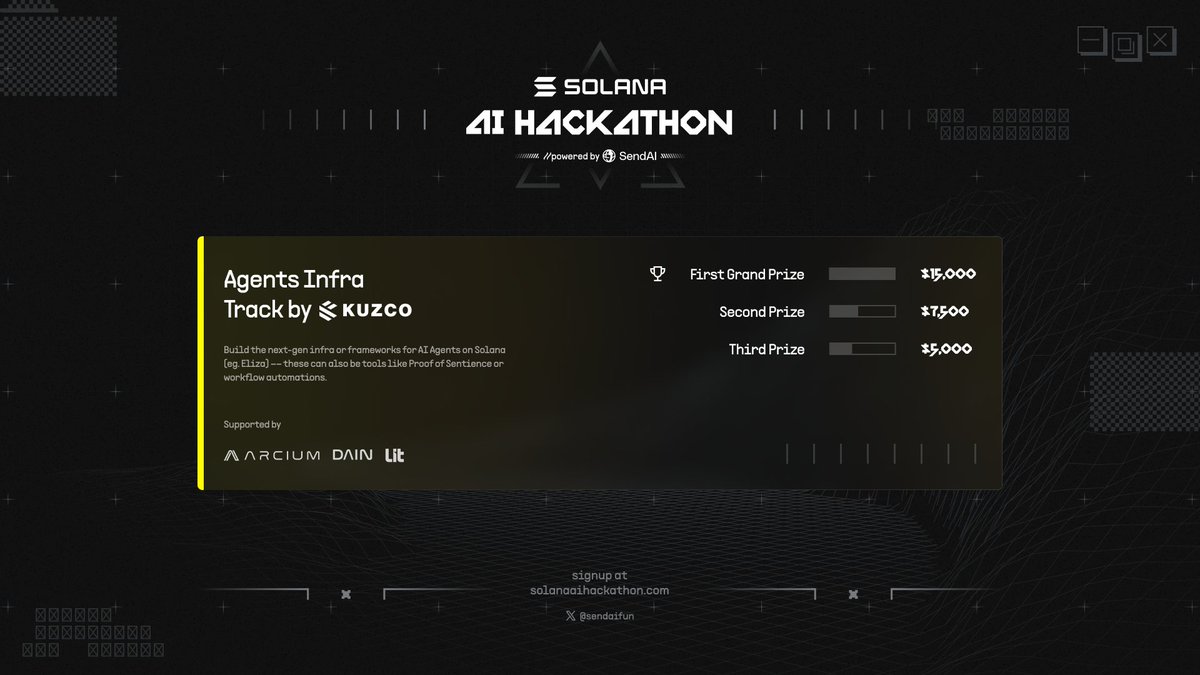1/ There are prizes for each of the four IGNITION tracks — Web3, DeFi, Gaming, Arts & Collectables — but did you know that there are also several company prizes? solana.com/ignition
Here’s what you could win 🧵
Here’s what you could win 🧵
2/ Build the best @ProjectSerum integration during IGNITION and you could win $30k! ignition.devpost.com 

3/ Using @RaydiumProtocol for your DeFi dApp? There’s a $30k IGNITION prize you could win. ignition.devpost.com 

4/ Building the metaverse? @StardustPlatfrm is offering a $30k prize for IGNITION. ignition.devpost.com 

5/ If your IGNITION project is using @PythNetwork, you could potentially win $30k! ignition.devpost.com 

6/ @wormholecrypto is offering a $30k prize for best integration during IGNITION. ignition.devpost.com 

7/ Integrate your project with @mangomarkets — and you could win an IGNITION $30k prize. ignition.devpost.com 

8/ If your project is using @Chainlink, good news. You could potentially win $30k during IGNITION. ignition.devpost.com 

9/ Does your IGNITION project use @PsyOptions? They’re offering a $30k prize — submit by October 15th. ignition.devpost.com
10/ Are you building something, let’s say "ape-like," for IGNITION? @DegenApeAcademy is offering a $30k prize. ignition.devpost.com
11/ Psst. If your project uses @unlimitedcope, there’s a $30k IGNITION prize for that as well. ignition.devpost.com
12/ Using @SolendProtocol? They’re offering $30k for best IGNITION integration. ignition.devpost.com 

13/ If your IGNITION submission uses @MarinadeFinance, you could win a $15k prize. ignition.devpost.com 

14/ Of course, there are tons of other IGNITION prizes as well — so be sure to submit your project by October 15th, 2021.
Learn more and good luck! 👉 ignition.devpost.com
Learn more and good luck! 👉 ignition.devpost.com
• • •
Missing some Tweet in this thread? You can try to
force a refresh















